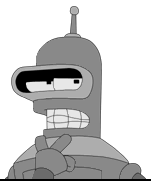Posted on 07/01/2007 12:31:24 AM PDT by TigerLikesRooster
Mysterious building discovered in emperor's tomb
Last Updated(Beijing Time):2007-07-01 10:33
Chinese archaeologists said that after five years of research they have confirmed that there is a 30-meter-high building buried in the tomb of Qinshihuang, Chinese first emperor more than 2,000 years ago.
The building, buried in the 51-meter-high, pyramid-like earth above the tomb's main body underground, has four surrounding stair-like walls and each wall with nine steps of platforms, said Duan Qingbo, a researcher with Shaanxi Institute of Archaeology.
The whole building were buried under the earth, which made it difficult for researchers to get a complete picture of it, according to Duan.
Duan said he believed the building may have been built for the soul of the emperor to go out.
Duan said they began to carry out research on the mausoleum's internal structure in 2002 with remote sensing technology, for it has not been allowed to be excavated.
The Qinshihuang's mausoleum is located near Xi'an, capital of northwest China's Shaanxi Province.
In the 1970s, about 1,500 terracotta warriors and horses were unearthed from surrounding pits of the mausoleum. Warriors and horses were believed to be buried with Qin in order to safeguard him after his death.
Qinshihuang, who unified China in 221 BC, became the first emperor of a unified China.
Thanks, but I don't see any.
You don’t see any what? Did you click on the link?
It works for me, but just in case try this: http://thehorsesmouth.blog-city.com/_the_terracotta_warriors.htm
And flying saucers to carry the stone from place to place, humans not having learned how to move stone until the invention of the reciprocating gasoline engine.
My eyes were green until surgery and then they turned blue. The recovery time is very long after such a disaster.
I don’t see any terra-cotta warriors. I still don’t.
What disaster?
I take it you were being nitpicky about the hyphen?
I believe that without the arch, using only stone, the only method you can build vertically is a rising slope.
It’s a Colgate factory.
No. I'm a nice fellow, I just don't see anything on that page that relates to terra cotta warriors.
I do see the beautiful picture in post #27. Maybe my computer filters it out or something?
BTW, my first wife's maiden name was Marten, she was from Canada.
Hummmm...  I wonder why?
I wonder why?
Maybe...  she knew too much...
she knew too much...
k!
Please FREEPMAIL me if you want on or off the
"Gods, Graves, Glyphs" PING list or GGG weekly digest
-- Archaeology/Anthropology/Ancient Cultures/Artifacts/Antiquities, etc.
Gods, Graves, Glyphs (alpha order)
Whew. I was hoping that you weren’t being a turd :o) Sounds like your virus software must be blocking the images for some reason; it might be the javascript that launches the thumbnails.
They'll have me in a front leaning rest at every airport in America.
There are many ancient Chinese poems lamenting the green eyes of the Han emperors.
...
All the ancient skeletons in and around Urumchi were Caucasian (types) until around 100-200BC.
I read about it in this book: The Tarim Mummies Or, in the book, The Mummies Of Urumchi also mentioned below.
Here is a book review:
....[As] one who has participated in an aspect of this research-the extent to which at least some of the later Xinjiang mummies may have been Northeast Iranians (Saka, et al.), who subsequently had an impact on both China and Japan-I can attest that Mair and Mallory have critically assessed every possible explanation before concluding that the great bulk of this Europoid population, esepcially in the later period, were in all probability Tocharian speakers of one sort or another (the earliest Europoids in the region may have been archaic Iranians, an idea recently suggested by my colleague Dr. Elizabeth J. W. Barber).
Moreover, the textile evidence, intensely researched by Dr. Barber (see her widely-praised book THE MUMMIES OF URUMCHI, W.W. Norton & Co., 1999), reinforces the conclusion that the Europoids who settled in the Tarim Basin in the latter part 2nd millennium, B.C.E., shared a common origin with a variety of Western Indo-European speakers, including the Celts, whose textiles were preserved in the salt-filled graves at Hallstatt (ca. 1300-400 B.C.E.). This, of course, also points squarely in the direction of the Tocharians, who, despite the fact that they were the easternmost of the attested ancient Indo-European speakers, shared a great many specific linguistic features in common with the Western group, especially the Celts. (Incidently,...the pointed "witches hat" is in fact deeply embedded in the ancient Brythonic-and, by extension, Celtic-culture and predates the 17th century Puritan image...by at least two millennia.)
Yes, the great majority of the current population of the Tarim is Uyghur-speaking, that is, of Altaic origin, and yes, there are some physical similarities between some of the current inhabitants of the region and the tall, blue-eyed people whose mummified remains have become so controversial. But that is to be expected whenever a new population intrudes into a region-and we know beyond a reasonable doubt that the intrusion of the "Turkic" speaking Uyghurs into Xinjiang occurred in the 9th and 10th centuries B.C.E, over a millennium after the arrival of the Iranian- (or perhaps Tocharian-) speaking Europoids.
To cite a parallel situation, the vast majority of modern Mexicans speak Spanish, a tongue introduced by a conquering culture some five centuries ago. Physically, however, most Mexicans, including those with little or no "Indio" cultural heritage, still reflect their Native American ancestry, though with a fair amount of "Europoid" admixture, especially among the ruling elite.
In short, THE TARIM MUMMIES should be required reading for anyone seriously concerned with trans-Eurasian cultural connections in the course of the last six thousand years.
Disclaimer: Opinions posted on Free Republic are those of the individual posters and do not necessarily represent the opinion of Free Republic or its management. All materials posted herein are protected by copyright law and the exemption for fair use of copyrighted works.